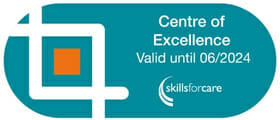Thanks again for the recent feedback, please do keep it coming. This week I wanted to talk about something we probably should have blogged about before now but, as we have launched our app this week, it seemed like the right time. It was interesting how many times it has come up in conversations and virtual meetings recently too!
Firstly, learning…
We have talked about this before, but just for scene setting, learning is the stuff you take away from training in your grey matter; it is the stuff you remember and ideally then apply in practice during your day-to-day role.
Training can be one of the methods to facilitate learning, but it is not the panacea fix-all solution; think about my medication error example from last week.
One of those conversations I mentioned earlier included an internal discussion about some of the website pages, where we say:
We learn differently, yet we are all taught the same…
All the learning and development people out there know about learning styles and we know about our own learning style, we know what works for us. Yet we utilise a system of training where a person stands at the front of the room sharing information with everyone else listening which has its roots in the earliest known Egyptian and Greek writings.
Maybe, just maybe, in the 21st Century, there are alternatives!
We appreciate that, in the real world, there are business pressures and realities and we need to get new starters up to speed whilst making sure that existing staff are still competent. However, we believe there are alternatives, one of them being blended learning.
Not designed to replace or duplicate
Click, our competence recording system, is not designed to replace or duplicate the effort you have invested in face-to-face training, quite the opposite in fact. Sometimes, perhaps for new starters who have never worked in care before, initial training sessions face-to-face are exactly what is required.
Even as a learntech company, we have supported our customers over the years to be creative with this. In fact, one of our customers recently shared how, by using Click, they were able to induct 70 new staff during COVID whilst the new staff were self-isolating! That’s the kind of creativity we mean.
Think of it like this: remember my medication error example last week? Have you ever been the really experienced person in the room (who didn’t make the error) and yet you are there with the new starters, because “ we need everyone to… just in case”. How does it make you feel…undervalued, demotivated?
Let’s re-imagine last week’s example. There’s been a meds error but, instead of everyone packed off for more training, everyone completes the medication assessment. In doing so, we start to build a record for CQC of what we have done (remember the learning when things go wrong). Then, this is where it gets really interesting…
Let’s analyse the results – who NEEDS the training?
If we analyse the results, we might find a group of people who really NEED the training, but now we have the evidence to support the next step in the decision-making process, around where we spend our precious resources, not just money but time too. What we do is send the people on the training who actually need it, rather than everyone “just in case.”
But we are also likely to find some people who don’t need the training because they have evidenced that they have the knowledge through the assessment, which means all we have to do is evidence their practice using observations. Join those two bits of evidence together and you have what Skills for Care describes in its mandatory training guidance “assess knowledge and competence at least annually”.
So, just by completing the medication assessment, we can now target our resources much more efficiently. If everyone is not going on the training “just in case”, it will also be more straightforward to cover shifts too. But something else has happened: we have not demotivated the experienced people in the process, we have actually VALUED their knowledge and enabled them to demonstrate it without using the sheep-dip approach.
Now let’s go back to induction briefly. What that customer I mentioned earlier did was ask people to complete the eLearning in Click whilst they were self-isolating and before they arrived on-site. Their experience was that new starters arrived more prepared for the face-to-face training because they already had some knowledge. They were able to ask questions of the facilitator because they were pre-prepared, they were more confident because they were prepared and, as a result, induction was a success, despite the challenge of COVID.
So when we said “not designed to replace or duplicate”, we meant it. A blended approach is much more efficient, much more motivating and is actually mostly common sense. But you need a system to support you and we want to be that system, because there are alternatives…
If this is your first time reading our blog, you might find these previous posts interesting:
Competence is more important than attendance
Care Certificate is not about training
Next week, let’s have a look at Blended Learning from some other perspectives…





